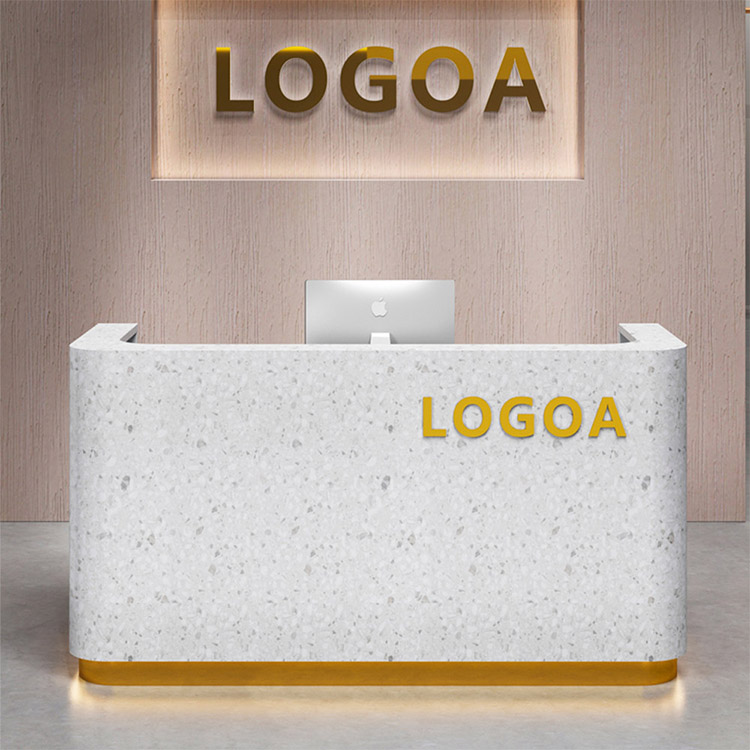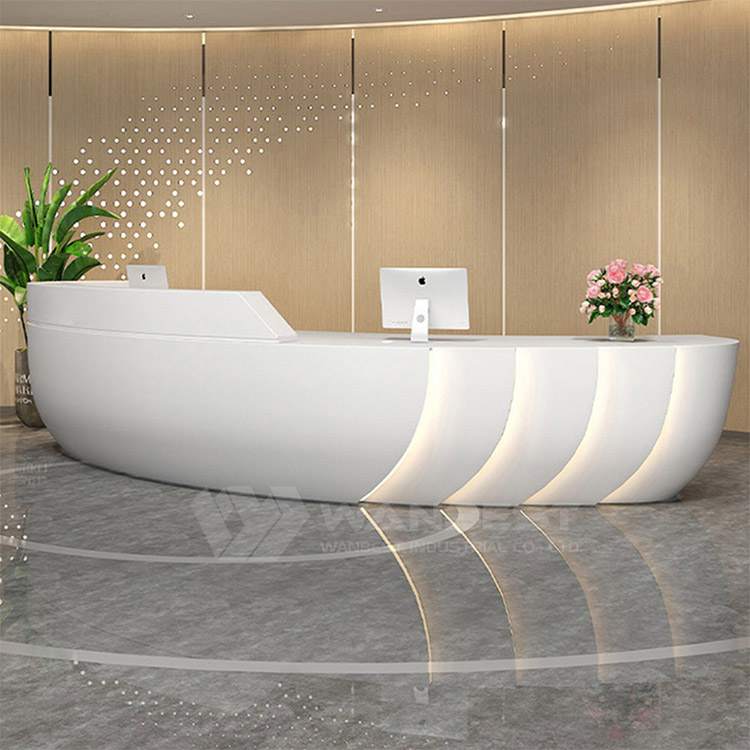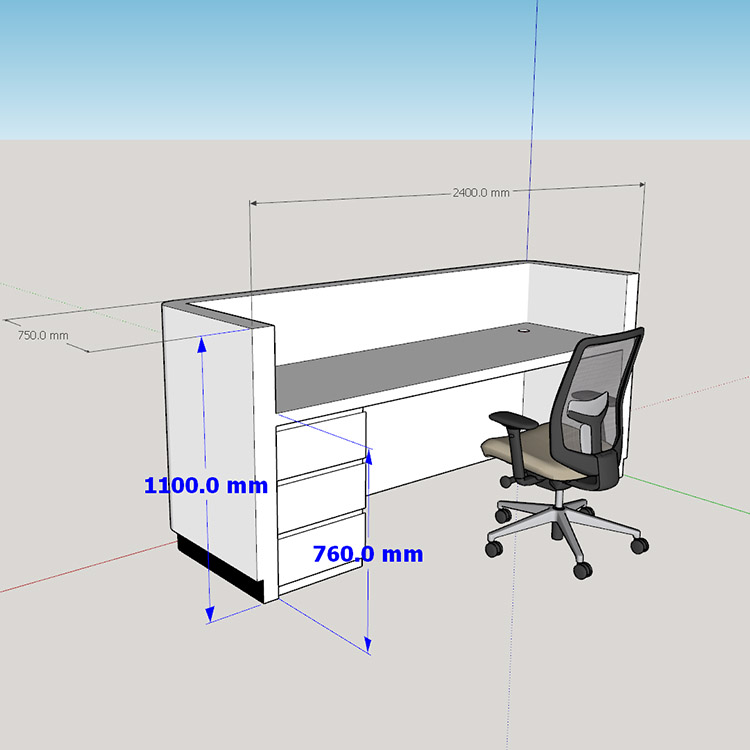DIY Reception Desk: A Practical Guide to Creating Your Perfect Workspace
A reception desk is the heart of any office space, creating the first impression for visitors and clients. Whether you’re setting up an office at home or designing a commercial workspace, building your own DIY reception desk can be a fulfilling and cost-effective project. However, before you dive into this DIY adventure, there are a few things to consider to ensure the final product matches your needs and style. This guide will walk you through key points, from budgeting to selecting the right materials, and help you create a reception desk that is both functional and aesthetically pleasing.
1. What’s Your Budget?
The first question you should ask yourself when embarking on a DIY reception desk project is: What is your budget? This will greatly influence your choice of materials, design, and even whether you should go for a DIY approach at all.
Low Budget (Under $500 per meter): If your budget is tight, DIY could be a smart choice. Building your own reception desk allows you to cut down on costs that would otherwise go into the purchase and shipping of pre-made furniture. Typically, the cost of ready-made reception desks, including shipping, starts at around $500 per meter. By doing it yourself, you can save a substantial amount of money and put that budget towards other elements of your office.
Higher Budget (Above $500 per meter): If you have a larger budget, it might be worth considering pre-designed options that are available in various shapes, sizes, and materials. These options provide high-quality designs and professional finishes, which may be difficult to achieve with a DIY project, especially if you’re not experienced in furniture making.
No matter your budget, it’s essential to align your DIY reception desk project with realistic expectations about what you can afford and how much time you’re willing to invest.
2. How to Choose the Shape of Your Reception Desk
The next decision revolves around the shape of your reception desk. There are several options to choose from, each offering unique functionality and aesthetic appeal.
Straight Reception Desk: This is the most traditional shape for a reception desk, offering a simple and clean design. Straight reception desks are perfect for smaller spaces or when you want a minimalist style. They are easy to build and require fewer materials, making them a good option for a DIY project.
L-Shaped Reception Desk: An L-shaped reception desk offers more counter space and can create a more dynamic layout. This design works well if you need additional workspace or if you want to divide the reception area from the rest of the office. Building an L-shaped desk will take a little more time and effort than a straight desk, but the result can be both practical and elegant.
Curved Reception Desk: A curved reception desk adds a modern, sleek touch to any office. It’s ideal for larger reception areas where you want to make a strong visual statement. Building a curved desk might be more challenging due to the need for precise measurements and curved cuts, but the end result can be stunning.
Each shape offers its own advantages, so it’s important to consider both the space you have available and the functionality you need from the desk. For example, an L-shaped desk may be perfect if you need multiple workstations in your reception area, while a curved desk might be better suited for a more sophisticated, welcoming look.
3. Choosing the Right Material for Your Reception Desk
Material selection is crucial when building a DIY reception desk. Not only does the material impact the look and durability of your desk, but it also affects how easy or difficult it will be to construct. Here are some common materials for reception desks:
HPL Board (Melamine Wood): If you’re looking for an affordable material, HPL board (melamine wood) is a great option. It’s the cheapest material available and can be easily customized with different finishes and colors. While it lacks the high-end appearance of other materials, it can still provide a functional, sleek look for a budget-friendly DIY desk.
Natural Solid Wood: For a classic, elegant look, natural solid wood is a perfect choice. It offers a timeless appeal and can easily be stained or varnished to match your office décor. However, solid wood can be expensive, and it may require more tools and skills to work with compared to simpler materials. But the final result can be a beautiful, sturdy desk that lasts for years.
Natural Marble: A natural marble reception desk exudes luxury and durability. It’s a durable and elegant material that can be used to create a high-end look for your office. Marble is a bit tricky to work with, especially when cutting, so it’s recommended for experienced DIYers. However, the result will be a timeless piece that adds sophistication to your space.
Artificial Marble (Corian, Quartz, Translucent Stone): Artificial marble materials like Corian, quartz, and translucent stone are great alternatives to natural stone. These materials are durable, easy to process, and have a modern, elegant look. They are especially great for reception desks because they can be molded into any shape, allowing for more creative designs. If you’re after a sleek, contemporary desk, these materials are highly recommended for DIY projects.
4. Reception desk Structure and Functionality
When designing a reception desk, it’s important to consider the functional structure of the desk, especially if you’re creating a DIY project. A well-designed reception desk typically consists of two main levels:
-
First Level (Customer Interaction Surface): The top level of the desk is where customers or visitors interact with the receptionist. This surface is usually set at a height of around 1.1-1.2 meters (4 feet), which is a comfortable height for standing or seated interactions. The height is ideal for allowing customers to approach the desk while maintaining a sense of professionalism and privacy.
-
Second Level (Staff Working Surface): The lower level of the desk is reserved for the staff’s working area. This surface is typically 760mm (approximately 2.5 feet) in height, which is the standard desk height for most office tasks. The second level provides a comfortable and ergonomic workspace for receptionists and staff, allowing them to handle phone calls, documents, and other administrative tasks efficiently.
Additionally, under the working top, most reception desks include storage solutions such as cabinets or drawers for organizing files, paperwork, and other office supplies. This extra storage is crucial for keeping the workspace tidy and ensuring the receptionist has everything within reach.
Including these features in your DIY reception desk design will help ensure that your desk is both practical and efficient, offering a seamless workflow for your office staff and creating a welcoming environment for visitors.
Final Thoughts
Building your own DIY reception desk is a rewarding project that can give your office a personal touch. Whether you are working with a tight budget or have a larger amount to invest, there are plenty of design and material options to choose from.
Before you start your project, make sure to ask yourself: What is your budget? What shape works best for your space? And which material will give you the look and durability you need? By answering these questions, you’ll be well on your way to creating the perfect reception desk for your office.
If you’re looking for pre-designed reception desks, or need inspiration for your DIY project, visit our reception desk collection to see some beautiful options that fit any office style.






